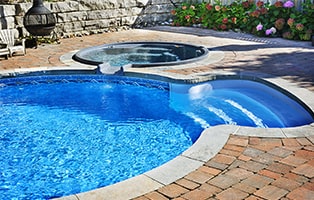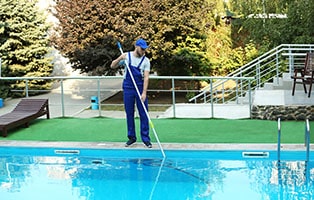Germs and bacteria cause swimming pool illnesses. We discuss the danger and what you can do about it!
There are few pleasures in life as enjoyable as diving into a refreshingly cool swimming pool on a sweltering July afternoon. However, make sure that the pool you’re jumping into is clean because there could be disease-causing pathogens in that seemingly pristine pool water.
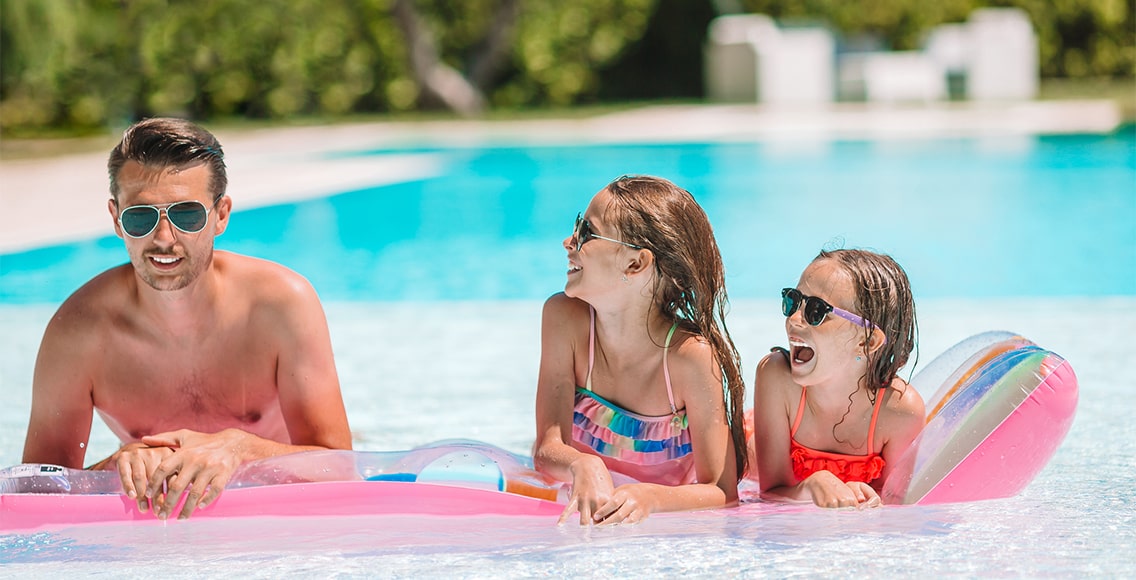
Then, instead of a relaxing afternoon, you’ll be looking at a trip to the emergency room or a lengthy hospital stay. From 2015 until 2019, the CDC (Centers for Disease Control and Prevention) reported 208 swimming-related disease outbreaks, and almost all of them happened in a public pool, water park, or hot tub.
High-Risk Groups
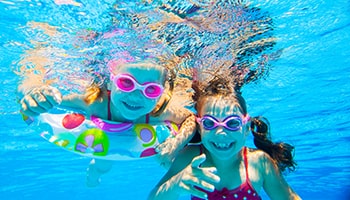
The groups most at risk of contracting swimming-related illnesses include pregnant women, children, and immuno-compromised individuals. For example, Cryptosporidium can contaminate swimming pool water, which can cause life-threatening symptoms in those with diminished immunological functioning.
That’s one of the reasons people with weakened immune systems should talk with their healthcare provider before participating in recreational water activities.
A Clean Pool Doesn’t Have an Odor
Some people adore the pungent aroma of chlorine wafting up from a pool because they erroneously think it’s an unmistakable sign that the pool’s clean. However, adequately treated pools don’t have strong chemical odors.
When chlorine in pool water combines with contaminants such as body oils, dirt, sweat, urine, and fecal matter, chemicals known as chloramines are formed. It’s chloramines that give off a strong smell and cause swimmers’ eyes to get bloodshot—not chlorine.
Some Of The Most Common Swimming-Related Illnesses
Cryptosporidium
The primary cause of swimming-related disease outbreaks is Cryptosporidium, a parasite known to cause gastrointestinal illnesses. Once cryptosporidium gets into pool water, it can survive for over ten days—even if a pool is fully chlorinated. If someone swallows water containing this pathogen, they could end up with a nasty case of diarrhea lasting three days or more. In older adults, this can be life-threatening.
Legionnaires Disease

While the most common recreational water illnesses (RWIs) are diarrheal, tainted swimming pool water can also cause respiratory infections. Legionella, which can lead to Legionnaires disease, is one such infection.
Legionnaires disease is a type of pneumonia. Although it often can be treated with a round of antibiotics, it sometimes is fatal.
Breathing in the steam from a contaminated hot tub is typically how people contract the disease. However, people can also get it from swimming pools. The pathogen thrives best in warm water because higher temperatures make it challenging to maintain proper disinfectant levels.
Swimmer’s Ear
Swimmer’s ear, an inflammation of the outer ear canal, can be excruciatingly painful. The usual cause is excessive water in the ear, which attracts bacteria in droves. Swimmer’s ear is common in people who spend lots of time in the water because skin breaks down faster when it’s moist, making it easier for bacteria to find a home.
Conjunctivitis

Conjunctivitis (popularly known as pinkeye) is contagious to the nth degree, and a person can contract it by splashing around in the same pool as someone who has it. This condition makes your eyes swell, turn reddish, and discharge a watery yellow fluid. Other symptoms are swollen eyelids, light sensitivity, and blurred vision.
While bacteria can cause conjunctivitis, it can also result from allergies or chemical contact.
Shigella

Bacteria called Shigella cause a disease known as shigellosis, an affliction that creates toxins that viciously attack the lining of the large intestine. Symptoms, which typically start a day or two after exposure, include bloody diarrhea, fever, stomach cramps, and intestinal wall ulcers.
An individual contracts shigellosis by swimming in water contaminated by the pathogen. Often, this happens because parents let their kids swim with their diapers on.
You can treat a relatively mild case by drinking fluids and getting plenty of bed rest. If your symptoms are severe, don’t hesitate to seek expert medical advice.
Ways To Protect Yourself from Pool-related Illnesses

The CDC found that over 10% of routine inspections in public pools, water playgrounds, and hot tubs resulted in the immediate closure of the facility due to severe infractions. Mostly, these violations were because of insufficient chemical levels.
That’s not good considering that pathogens such as E. coli, Cryptosporidium, and Giardia rapidly spread in public pools when chemical levels are too low. Because chemicals such as bromine, chlorine, and cyanuric acid are easy to add and can annihilate most swimming pool germs in minutes, there’s no excuse for this.
If you want to know if pool water chemistry levels in public areas are adequate, check them yourself with test strips you can buy at your local pool store. You can also ask for the pool’s inspection scores or look them up online.
Free chlorine should be one to three parts per million in pools and water parks and three to ten parts per million in hot tubs and spas. However, stick to your own backyard pool if you really want to reduce the chances of getting sick from swimming pool germs.

Shower Before and After Swimming
You’ll rinse off 99% of all contaminants sticking to your body, such as dirt and feces, by taking a shower before you jump in the water. Most people have approximately 0.14 grams of fecal matter on their bodies at any given time, equivalent to a few grains of sand.
Even a quick rinse before diving in can significantly reduce the impurities you bring with you into the water, which helps maintain adequate chlorine levels. It would be best if you also showered afterward, using plenty of soap when doing so.
Don’t Swallow Pool Water
One of the best ways to protect yourself from Cryptosporidiosis is not swallowing pool water. Ingesting so much as a mouthful of this pathogen can make you sick for weeks with symptoms that include stomach cramps, watery diarrhea, and vomiting.
Most people think that chlorine kills germs instantly. While chlorine destroys virtually every type of bacteria in a minute or less, some disease-causing agents are surprisingly resistant to it. Cryptosporidiosis happens to be one of the few microorganisms with a sky-high tolerance for this chemical. It can survive in a pool for up to ten days—even if it’s properly chlorinated.
Check Chemical Levels
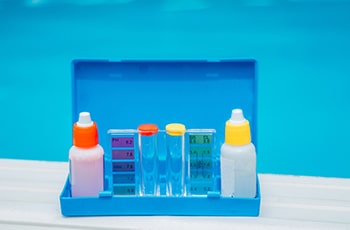
To minimize the chances of contracting a swimming-related illness, you’ll need to check your pool’s chlorine amounts regularly. High temperatures, sunlight, and water features that create mist decrease chlorine levels. Also, check pH levels because chlorine works best if these levels fall within the correct range.
If the pH is too high (above 8), chlorine won’t be effective at killing germs. However, your pipes can get corroded if the pH level is too low (below 7).
Keep Wounds Covered
If you have an open cut or wound, you should stay out of the water, particularly if the injury results from a piercing or surgical procedure. If you do go in, cover your wound with a waterproof bandage.
Dry Your Ears
You can minimize the chance you’ll get swimmer’s ear by thoroughly drying your ears with a towel after swimming or gently pulling on your ear lobes while tilting your head from side to side. If you’re prone to getting ear infections, consider wearing earplugs or a bathing cap.
Final Thoughts
A backyard swimming pool means loads of summertime fun. However, having a pool full of disease-causing germs could put a damper on the festivities.
An excellent way to keep your pool blessedly free of nasty pathogens is by adhering to a pool cleaning regimen that includes checking chemical levels. Another thing you’ll want to do is to clean your pool regularly.
Of course, you can always do that manually if you’re into backbreaking work. If this is your choice, I have a question: with the advent of technologically sophisticated pool vacuum cleaners, including pool robots that make pool cleaning effortless, why would you do that?

Pool Maintenance Tips & Tricks
